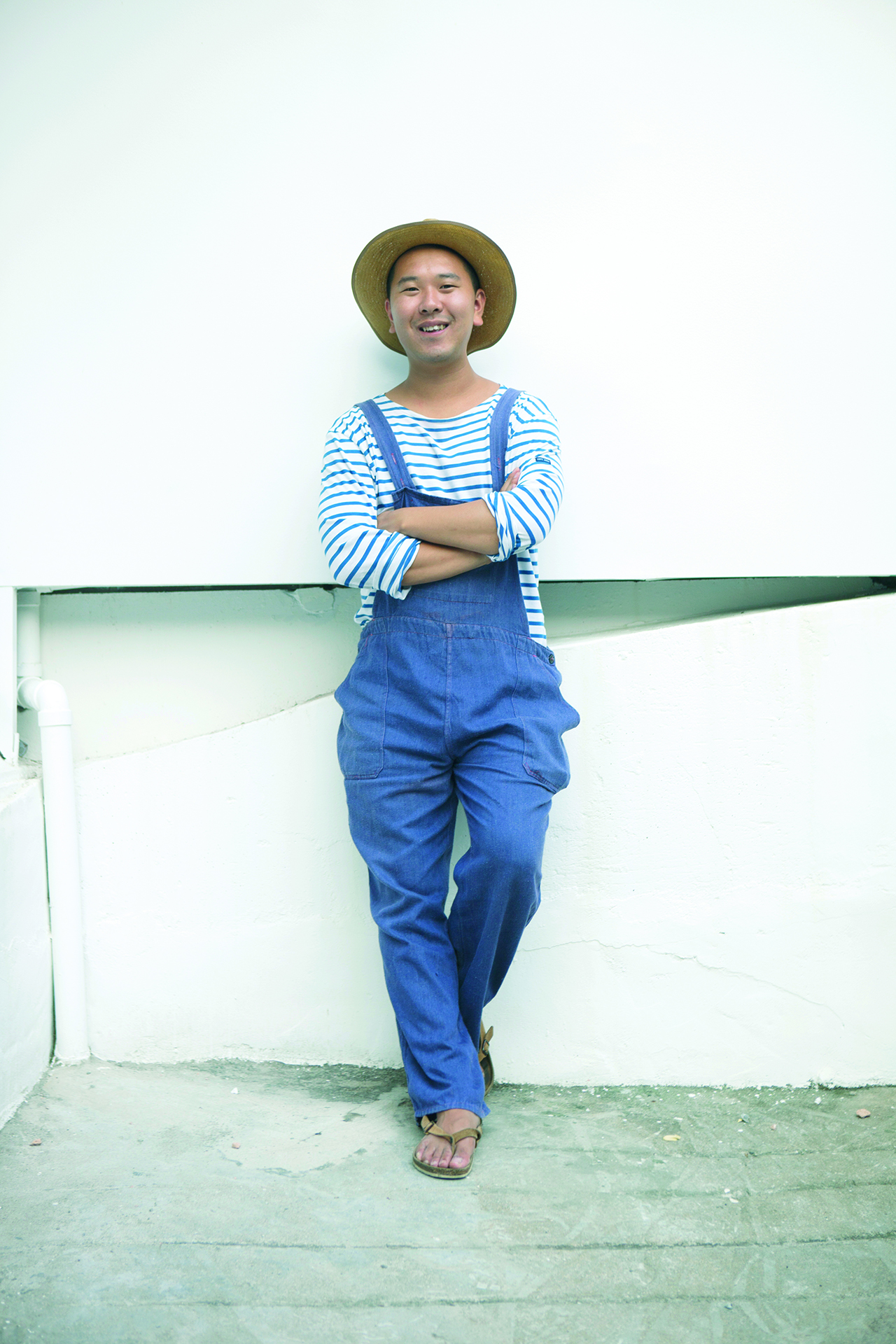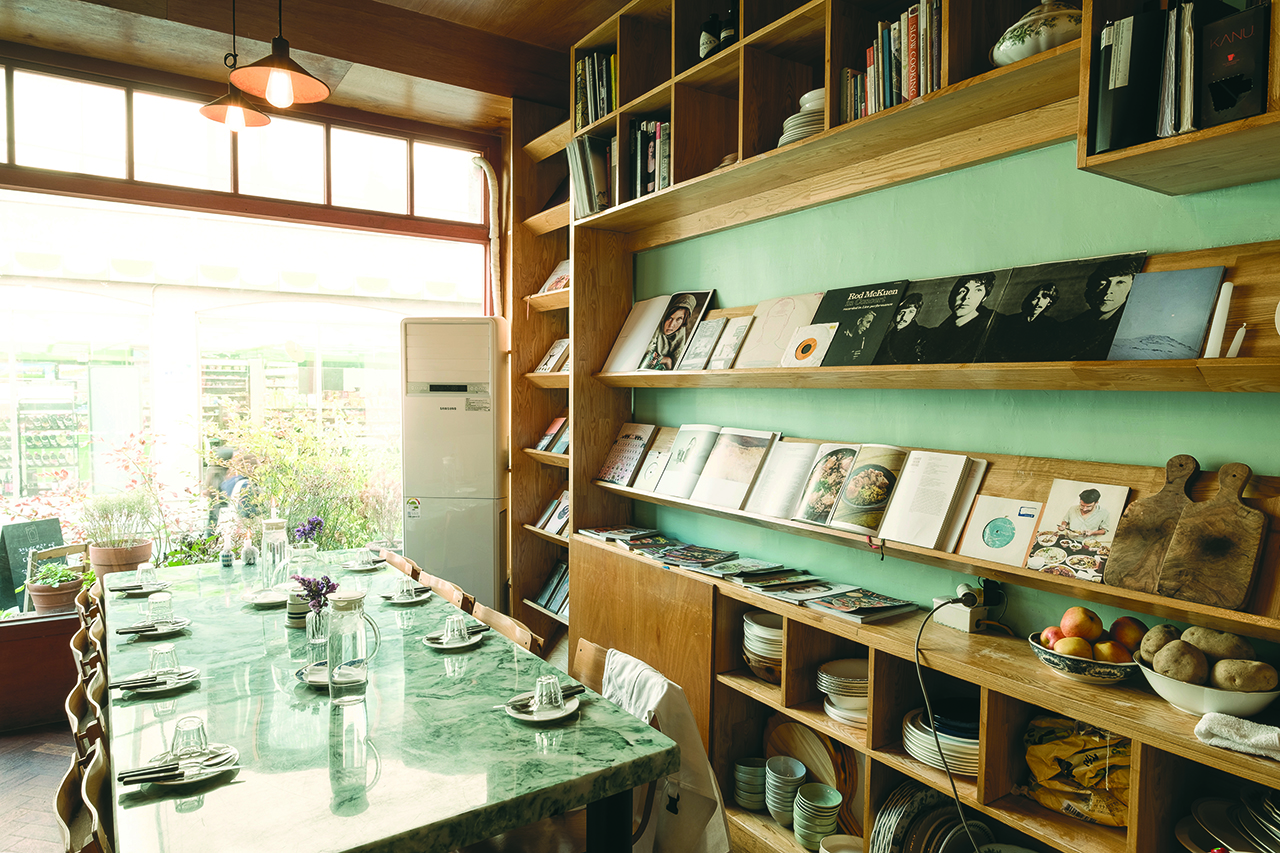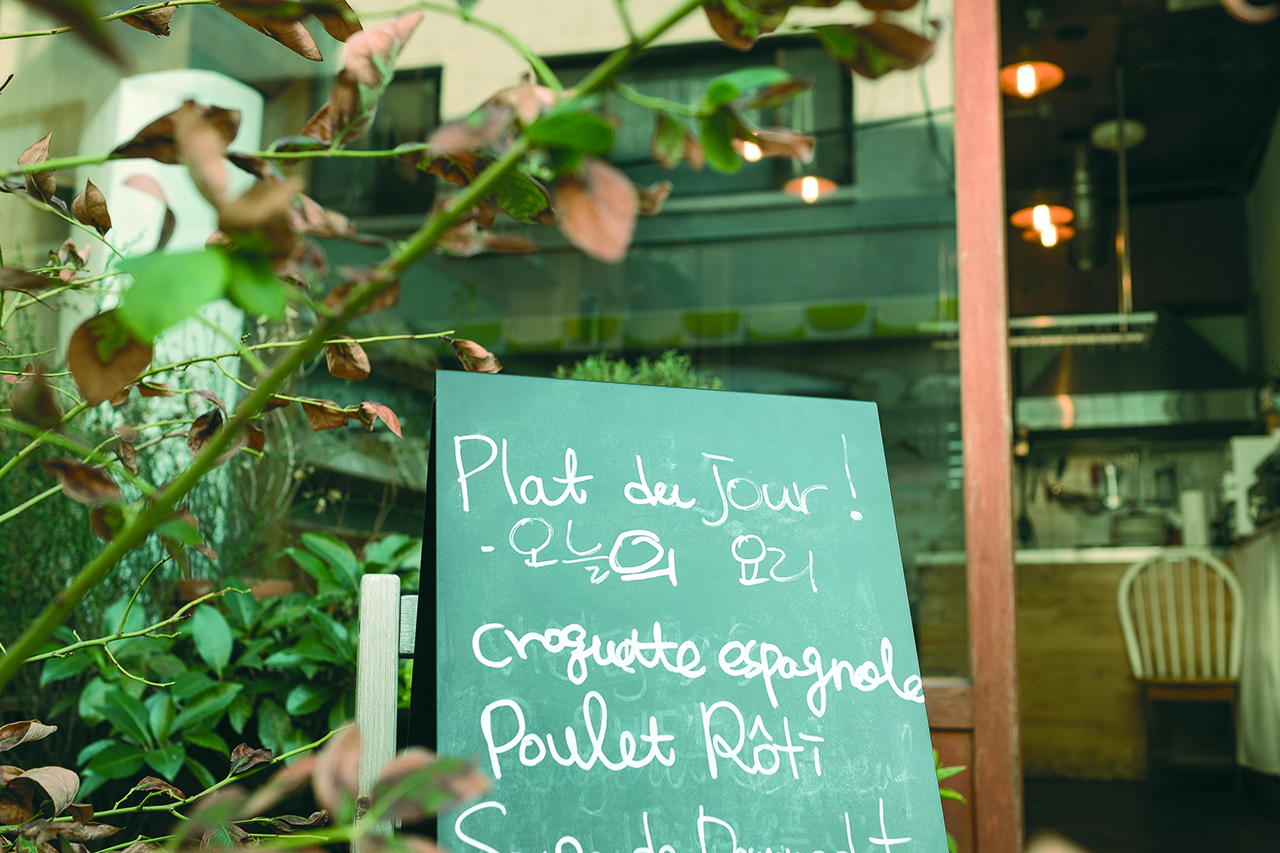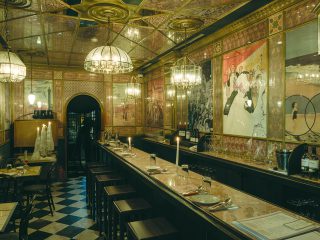
Chef Chang Jinwoo transforms the hip Gyeongnidan district
Chang Jinwoo is a man of many talents. Trained in traditional Korean music, he’s also worked as a professional photographer, but it’s his talent at creating unique dining spaces and special meals that helped make his name. Starting with a small restaurant in Gyeongnidan, Chang expanded to become one of the best known restaurateurs in the city, despite having no formal training or background as a chef. An entire alleyway in Gyeongnidan is colloquially known as “Chang Jinwoo Alley” because it is filled with his culinary entrepreneurship.

Food as art
He’s a man who always has food on his mind, seeing it as an extension of his art. “I really love to eat. I also think that when you think about businesses, restaurants have an especially deep impact. In art, it’s sad, but however good your pictures are, they can be discarded in such a short time. But food lasts a lifetime. To me, food and photos are both a way to create something piece by piece over a lifetime, and that process is something I enjoy deeply.”
“I’m a person who really cares about the design of a space and the music, too. You can make a collection out of just speakers. When they see me, other people think I’m crazy. ‘Why’d he go and get all those expensive speakers to set up here?’ Well, I wanted to, and that’s how I made ‘Grand Bleu.’ I’ve gathered these things for decades in order to create a store that I love. I brought the lights from abroad, and the plates and silverware, too. That’s how you create a store with its own special flavor.”
Creating flavors from the exotic and familiar
Those special flavors are something Chang puts extra effort into creating. “I look for the freshest and most delicious exotic ingredients available at any given time. For example, to make pasta vongole, I go to Noryangjin Fish Market in the early morning to pick the most interesting and best seafood to serve to guests that night.”
“Recently, I used wild mussels from Ulleungdo and shrimp from Dokdo. Those are pretty rare ingredients that you’re unlikely to just come across. We added a little seasoned soy sauce to the mussels and changed it into a Koreanized Sicilian-style risotto. Then we took the plump shrimp, and after really taking a good long look at them, we decided to mix them with rice for this delicate sweet and savory flavor.”

How to set the scene and create success
His style of restaurants is unique, drawing both from his idiosyncratic tastes and his wide experiences of travel, which is why Gyeongnidan was a natural home for his first forays into creating a restaurant. “It’s like my hometown, where I first gathered the money to start and get my hands on a place. But the real charisma of Gyeongnidan is that it’s a multicultural space. I really felt like trends were being created in this neighborhood,” Chang says. More than that, his restaurants have a positive relationship with the surrounding people. “We aren’t loud or open for long hours. I think this is how you win over the people in the neighborhood. We close our doors by 10:30 every night and aren’t open in the daytime.”
Chang’s model for creating restaurants is both unique and remarkably clear. “From the beginning, I was motivated by the way businesses operate in Europe. It’s a place where you can just slip out for a glass of wine or beer in the evenings and then happily go to work the next day. I just wanted a place where I could close the doors, call all my friends and eat wonderful food together.”
Chang’s other secret is his commitment to ethics. “My business philosophy is clear: First, you have to create employment. Second, you have to provide a good environment for your employees, where social engagement and sharing is encouraged – there’s no real minus to this model.”

Chang’s Kitchen 장진우 식당
Gyeongnidan 경리단길
40 Hoenamu-ro 13ga-gil, Yongsan-gu
070-8160-0872
Written by Jennifer Flinn
Photographed by Dylan Goldby


